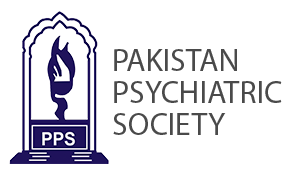Frequency of Psychosocial Factors leading to Maternal Depression
Abstract
Introduction:
In women there is 21.3% lifetime prevalence of a major depressive disorder which is twice the prevalence rate in men. Severe depression during post-partum period requiring hospital admission is more prevalent as compared to non-child bearing women of same age. Depressive illness during the post-partum period can be debilitating if left untreated. Long term adverse effects of depressive illness in mothers can lead to behavioural, cognitive and interpersonal problems and further serious outcomes.
Method:
This is a cross-sectional descriptive study conducted in outpatient department of Paediatric unit 1, Dow University of Health Sciences & Civil Hospital Karachi in the duration of 22-Sep-2014 to 22-Mar-2015. Each mother registered in the study was screened for maternal depression through Edinburgh postnatal depression scale (EPDS). Suspected cases of depressed mothers were interviewed through (CIS-R) scale. The severity of depression among these depressed mothers was quantified through Hamilton depression rating scale (HAM-D).
Results:
Each mother registered in the study was screened for maternal depression through Edinburgh postnatal depression scale (EPDS). Out of 350, 258 fulfilled our inclusion criteria. The mean age of enrolled participants was 22.3±5 years. Majority of the mothers were younger than 25 years (n=153, 59.3%). Level of education of the participants which shows that half of the mothers (n=124, 48.1%) included in sample were uneducated followed by primary education (n=103, 39.9%). Parity shows that more than half of the mothers (n=145, 56.2%) in this sample were Primipara. Feeding pattern of the mothers shows that 84.5% (n=218) of the mother’s bottle feed their children. On further analysis of severity of depression by HAMD score it was observed that 86 had mild depression, 163 had moderate and 9 had severe depression.
Conclusion:
There is need of public awareness regarding early marriages, breast feeding and educating young women, so prevalence of maternal depression can be reduced.
Key Words: Maternal Depression, EPDS, CIS-R, HAMD, Pediatrics
Downloads
Copyright © JPPS. Published by Pakistan Psychiatric Society
Licensing: This work is licensed under Creative Commons Attribution-NonCommercial 4.0 International License
Readers may “Share-copy and redistribute the material in any medium or format” and “Adapt-remix, transform, and build upon the material”. The readers must give appropriate credit to the source of the material and indicate if changes were made to the material. Readers may not use the material for commercial purposes. The readers may not apply legal terms or technological measures that legally restrict others from doing anything the license permits.






.png)









